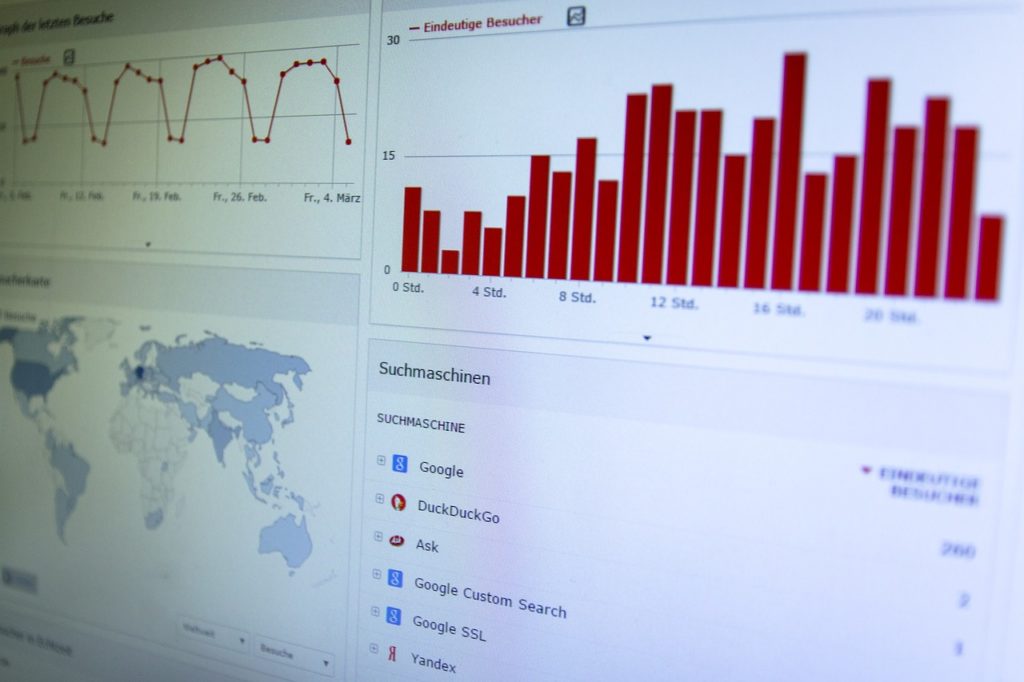Show:
How to Keep Track Your eCommerce Metrics
Paying close attention to eCommerce metrics will add strength and resilience to any business. What gets measured gets managed, and what doesn’t get measured tends to run wild. You want to know exactly how your business is performing compared to your expectations.

You don’t need to become a digital marketing expert in order to take advantage of the natural data your business generates. A simple approach to data is sufficient to add significant value to your business.
If you’ve been getting by without tracking your eCommerce metrics so far, this is a huge opportunity. Using data will enable you to make smarter decisions while spending less time on the decision-making process.
How to Compare and Choose eCommerce Metrics
Not all metrics are made equal. Watching the right data in the right way can lead you down a path to increased profits and happier customers. Other forms of data measurement may mislead you, having you think you’re doing the right things only to be surprised by bad results down the line. It is essential that you know how to distinguish good metrics from bad.
Some metrics are foolproof. Web traffic is a great example of a KPI (or “Key Performance Indicator”) that can be relied upon to give you good information. Knowing how many people are visiting your site, and how long they are staying for, is important for quantifying the steps of your sales funnel.
Another KPI to consider is your conversation rate. Once somebody visits your eCommerce store, how likely are they to spend money before leaving? How much do they spend on average? Are there any conflating factors, such as time of day or time of year? These are metrics to keep a close eye on.

One last metric that every business should watch is their email sign-up rates. Email lists, along with more modern text/phone lists, are the best way for any business to keep in touch with their customers. Nobody can take away an email list from a business, whereas social media platforms come and go all the time. Measuring email sign-ups and conversion rates is a good way to track your business’s success in marketing and community building. When we talk about email marketing, you will find this video useful if you want to automate your email campaigns:
Simplicity is a Strength
Your goal is to use a suite of metrics that will actually make sense to you during the natural flow of business. When you are busy and have a lot to do in the day, will you be able to look at the metrics for 5-10 minutes and draw useful conclusions?
If using your eCommerce data is a struggle, the data is unlikely to be truly useful. Metrics you understand are always more useful than the ones you don’t.
When a business is tracking way too many metrics, it is a sign that they are tracing down the symptoms of their results rather than the root causes. One may measure everything from time spent on videos and pages, to locations of buyers of different products, to age and gender differences in purchasing behaviors, and far beyond.
How likely is all of this information to be useful? What if there is a single root cause, such as the location of the “buy now” button on the web page? Measuring the simplest things can allow for massive action with minimal change to the system.
Consider how this works in other areas of business. Your company may employ one financial advisor, while Facebook employs a team of hundreds of accountants and beyond. That’s because the large business deals with tax laws and investments that are mind-boggling, spanning tens or hundreds of billions of dollars. Meanwhile, a small growing business can work with one good financial advisor to ensure its basic financial strategy is sustainable and meeting all legal requirements.
Data management works in much the same way. Get very good at measuring a simple array of metrics that teach your business the essential information it needs. Limit yourself to that which you can truly act upon.
Choose Your Interface Wisely
The way that data is displayed makes a huge difference in how that data is interpreted. If a web interface for eCommerce analytics is confusing to you, it’s no good for you.
Make it easy for yourself. You shouldn’t have to spend weeks reading and studying just to make heads or tails of a few KPIs. On the other hand, you do need to be willing to commit a little time, such as a few hours, to read the documentation and learn the basics of how the eCommerce platform you are using work.

In general, many data analytics issues are more tactical than strategic. It’s not that the business operators don’t know how to identify good metrics in their heads. The problem is that people are getting confused at the nuts and bolts of how to integrate these tools into their business.
Follow the two day rule. Be willing to read, learn, and explore your data interface for two days as you try to understand how it works. After that, if you are still confused, it may be time to move on to a new interface or try a different visual approach to the data. It’s worth it to try again and again, exploring half a dozen interfaces if that is what it takes. Don’t rest until you arrive at a solution that you’ll be happy to use for years to come.
Keeping Track of eCommerce Metrics
Once you have a sustainable approach to capturing and measuring useful data for your eCommerce business, everything will get better. It will be easy to identify the biggest opportunities and risks facing your business in the foreseeable future.
It is well worth it to take the time and energy to get these eCommerce metrics and interfaces set up. If you are not technologically savvy individual, you may want to recruit one of your younger employees to jump in and help out. Whatever it takes, use data to strengthen your business. You will not regret it.

 Return to Previous Page
Return to Previous Page








